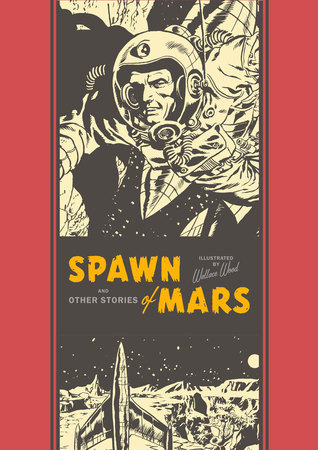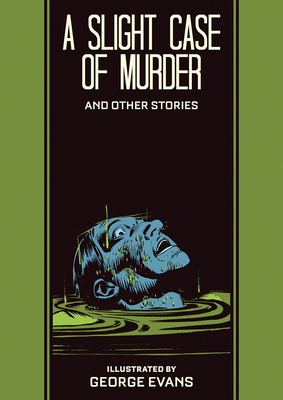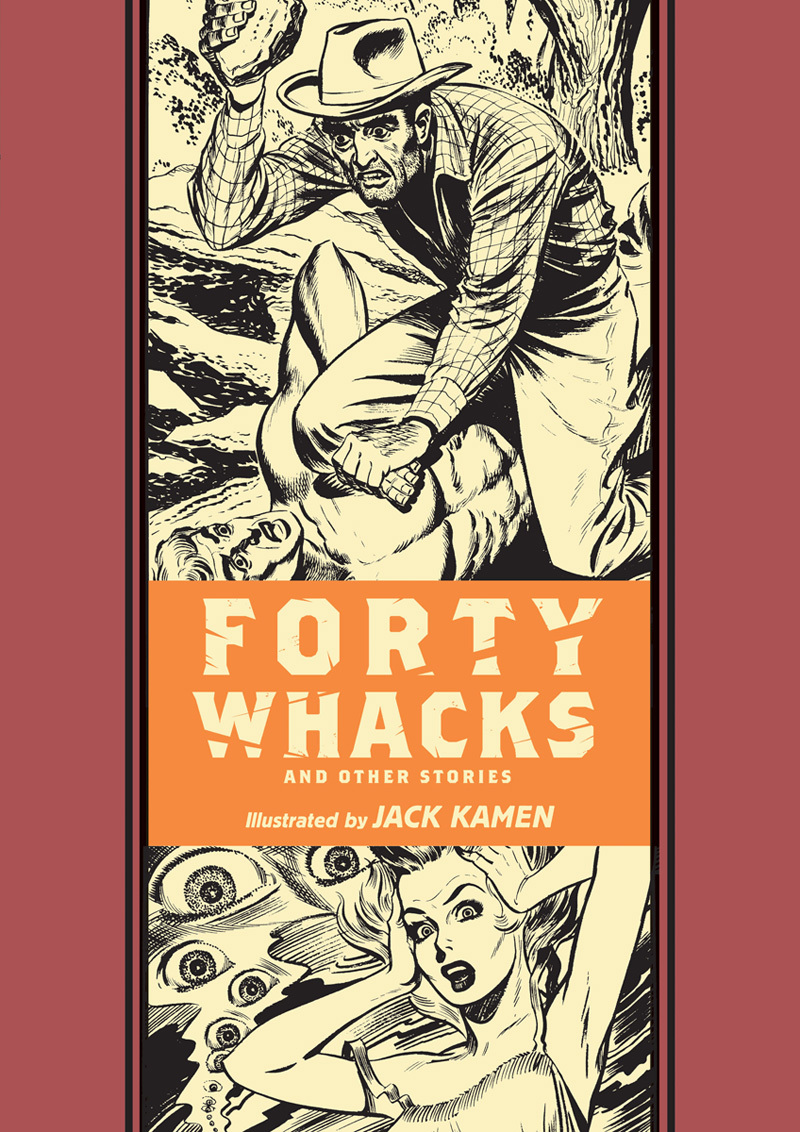
Part of Series
Wallace Wood fans love his sleek, preternaturally lush art, but they especially love the wonderment of his spectacular science fiction. This highly anticipated mouth-watering collection features over two dozen stories brimming with Wood’s meticulously detailed, genre-defining brushwork—all save the one Wood wrote himself on the typewriter of EC editor Al Feldstein. And with titles like “Spawn of Mars,” “The Dark Side of the Moon,” “A Trip to a Star,” “The Invaders,” “The Secret of Saturn’s Ring,” and “The Two-Century Journey,” how can you go wrong? This is EC science fiction at its finest. Like every book in the Fantagraphics EC line, Spawn of Mars and Other Stories features essays and notes by EC experts on these superbly crafted, classic comic book masterpieces. The 1950s were also a launching pad for some of the greatest comic book artists in history, many of whom worked for EC—including Wallace Wood, whose hypnotically detailed, lushly expressive brushwork brought to life menacing thugs, ominous cityscapes, and small-town America, as well as Everymen grappling with profound moral issues—not to mention some of the most heart-stoppingly beautiful women ever to sashay across a comic book page. Like every book in the Fantagraphics EC line, Spawn of Mars features extensive essays and notes on these classic stories by EC experts—but the real “meat” of the matter (sometimes literally, in the grislier stories) is supplied by these ofted lurid, sometimes downright over-the-top, but always compelling and superbly crafted, classic comic-book masterpieces.
Authors

Wallace Allan Wood was an American comic book writer, artist and independent publisher, best known for his work in EC Comics and Mad. Although much of his early professional artwork is signed Wallace Wood, he became known as Wally Wood, a name he claimed to dislike. Within the comics community, he was also known as Woody, a name he sometimes used as a signature. He was the first inductee into the comic book's Jack Kirby Hall of Fame, in 1989, and was inducted into the subequent Will Eisner Award Hall of Fame three years later. In addition to Wood's hundreds of comic book pages, he illustrated for books and magazines while also working in a variety of other areas—advertising; packaging and product illustrations; gag cartoons; record album covers; posters; syndicated comic strips; and trading cards, including work on Topps' landmark Mars Attacks set. For much of his adult life, Wood suffered from chronic, unexplainable headaches. In the 1970s, following bouts with alcoholism, Wood suffered from kidney failure. A stroke in 1978 caused a loss of vision in one eye. Faced with declining health and career prospects, he committed suicide by gunshot three years later. Wood was married three times. His first marriage was to artist Tatjana Wood, who later did extensive work as a comic-book colorist. EC editor Harvey Kurtzman, who had worked closely with Wood during the 1950s, once commented, "Wally had a tension in him, an intensity that he locked away in an internal steam boiler. I think it ate away his insides, and the work really used him up. I think he delivered some of the finest work that was ever drawn, and I think it's to his credit that he put so much intensity into his work at great sacrifice to himself". EC publisher William Gaines once stated, "Wally may have been our most troubled artist... I'm not suggesting any connection, but he may have been our most brilliant".


